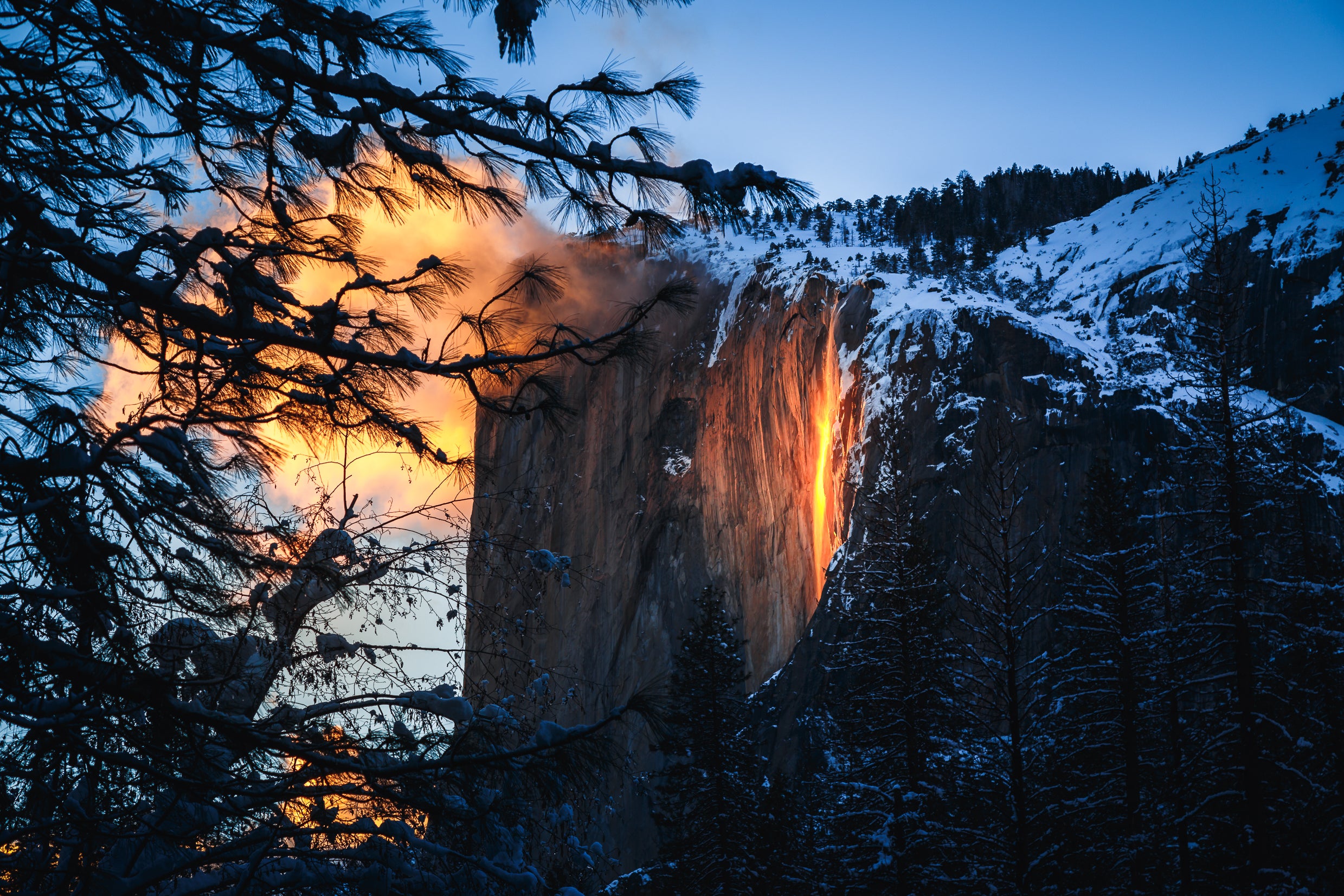Firefall is back: How and where to see Yosemite’s breath-taking natural phenomenon
During February the sunset’s light makes it look like the waterfall is on fire

Your support helps us to tell the story
From reproductive rights to climate change to Big Tech, The Independent is on the ground when the story is developing. Whether it's investigating the financials of Elon Musk's pro-Trump PAC or producing our latest documentary, 'The A Word', which shines a light on the American women fighting for reproductive rights, we know how important it is to parse out the facts from the messaging.
At such a critical moment in US history, we need reporters on the ground. Your donation allows us to keep sending journalists to speak to both sides of the story.
The Independent is trusted by Americans across the entire political spectrum. And unlike many other quality news outlets, we choose not to lock Americans out of our reporting and analysis with paywalls. We believe quality journalism should be available to everyone, paid for by those who can afford it.
Your support makes all the difference.Firefall is back, with this breath-taking natural phenomenon an annual crowd-pleasing experience.
Each February tourists flock to California’s Yosemite National Park for a glimpse of the glowing sight.
Onlookers can witness a spectacular light show due to the way sunset rays reflect onto a waterfall.
But what is Firefall, why does it happen and how can visitors see it?
Read on for everything we know about this unique yearly vista.
How does the Firefall natural phenomenon happen?
This rare phenomenon occurs when Horsetail Fall in Yosemite National Park is lit up by the sunset. It then glows orange, creating the vivid illusion that the waterfall is on fire.
This stream of light can often only be seen for a moment at a time, so patience is required.
The natural lighting effect happens during mid to late February, as this is when the sunset’s light hits the waterfall at the right angle.
It can only be seen on clear nights when the waterfall is flowing, and even a small amount of cloud can affect the view.
The National Park Service website says: “Although entirely natural, the phenomenon is reminiscent of the human-caused Firefall that historically occurred from Glacier Point.”
Where can I see Firefall?
The Firefall natural phenomenon can be seen at Horsetail Fall, a waterfall in El Capitan, Yosemite Valley, which is part of the region’s National Park. This waterfall often only flows during the winter months.
Reservations will be required for entry to Yosemite Valley 24-hours a day, to manage the amount of people flocking to see this unique event.
Visitors can book tickets at Recreation.gov for the following dates: 10-12 February, 17-19 February and 24-26 February.
Tickets are free, but there is a reservation fee of $2 (£1.62).
The National Park Service advises: “To view Horsetail Fall, park at Yosemite Falls parking (just west of Yosemite Valley Lodge) and walk 1.5 miles (each way) to the viewing area near El Capitan Picnic Area.”
People can also make a reservation to camp nearby at Wawona, and Hodgdon Meadow Campgrounds.
Join our commenting forum
Join thought-provoking conversations, follow other Independent readers and see their replies
0Comments